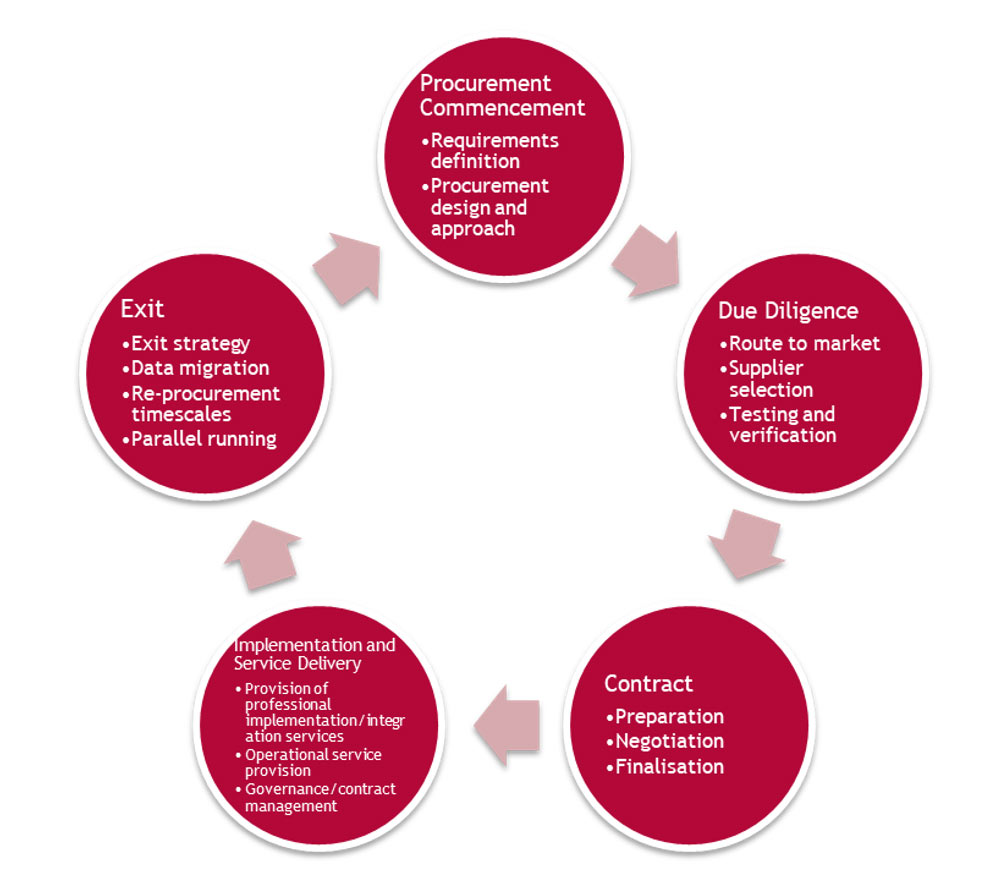Digitising the student experience in higher education: Some practical tips for procurement
Five considerations for HEIs when undertaking an IT procurement for largely “off the shelf” small-scale student-facing applications for online teaching, knowledge stores and document repositories etc.
It is probably fair to say that, as a sector, higher education has lagged behind in terms of digital evolution, largely because traditional teaching formats historically in place (such as in-person classroom and lecture-based learning) were not impacted by digitalisation in any fundamental way. However, when the Covid pandemic hit in 2020, HE institutions (HEIs) were suddenly faced with the urgent and critical problem of delivering continuity of teaching against a backdrop of remote learning in order to adhere to Government guidelines.
In the current era, modern and digitally savvy students expect more for their money, such as quality housing, quality of teaching, quality of course materials, availability and accessibility. Accordingly, HEIs now compete on a number of different levels.
To remain competitive and excel at meeting student needs and demands in a global market, HEIs are being forced to look at how they deliver teaching (amongst other things) to ensure continuity of supply in the modern world and at an acceptable standard.
A digital strategy is core to achieving this, based on a student-focussed ‘digital by design’ approach. ‘Digital by design’ means embedding digital into the teaching strategy and the aims and objectives of the HEI, with proactive consideration of the procurement journey. This is in contrast to knee-jerk reactions leading to the procurement of perhaps numerous digital applications which cannot be properly integrated with each other, resulting in a digital infrastructure which is not stable, riddled with performance issues and at risk from cyber-attacks.
When undertaking any procurement, during service delivery and on expiry, regard should always be had to the procurement cycle (see fig.1) and appropriate planning, preparation and implementation at appropriate times.
Fig.1. The Procurement Cycle:

To assist HEIs in building their digital strategy utilising a digital by design approach, we set out below (in no particular order) five considerations when undertaking an IT procurement for largely “off the shelf” small-scale student-facing applications for online teaching, knowledge stores and document repositories etc.
1. Embarking on the digital procurement journey
Digital by design is about building digital into the heart of your procurement strategy to ensure applications are capable of integration, which in turn ensures that the stability, security and performance of both the infrastructure and applications are not compromised.
On that basis, the procurement journey should be a long-term strategy, earmarking which applications are to be procured and when, ensuring that they are capable of integration. For example, if looking to procure an application such as Microsoft Teams, an HEI may look to procure Microsoft cloud infrastructure knowing that MS Teams and other MS applications will be capable of seamless implementation and integration. The HEI should also have obtained an understanding of the market to determine how many online cloud applications are capable of implementation onto MS cloud infrastructure and which other applications they are capable of integrating with.
2. Due Diligence
Before purchasing any digital application, always do your due diligence. Most people wouldn’t hire a tradesman without obtaining three or four quotes, reviews or recommendations. Procurements of digital solutions are no different. We set out a handful of some initial due diligence considerations:
- verify the application – is it tried and tested, has it been recommended?
- what are the licensing fees and what are the rates/fees for professional/consultancy services e.g. implementation activities and how are support and maintenance fees calculated?
- what does implementation involve and who will be responsible for integrating?
- is it a cloud-based app and, if so, how is availability ensured?
- where is the infrastructure located and where will data be processed?
- who will implement and who will be responsible for operational delivery and performance?
- are any sub-processors/sub-contractors involved?
- has the application been penetration tested and, if so, under what circumstances/environments?
- is a data transfer impact assessment or data privacy impact assessment required?
- has the application been subject to any cybersecurity incidents?
- what is the security policy of the operational service provider and when and how will patches be applied and updates made?
- what is the financial standing of the operational service provider and what are the risks to the HEI should the provider become insolvent or be unable to perform the services?
3. Engagement of matter experts
Finance teams, technical teams, operational teams, commercial teams and subject matter experts should be mobilised early on and their expertise used to identify requirements and to help shape and structure the procurement, the contract model and implementation and operational delivery strategy. Key requirements should be defined at the outset, such as functional and non-functional requirements and security requirements. These should be drafted in a coherent manner which is legally sound and capable of being subject to legal scrutiny. The requirements should be incorporated into the contract.
4. Appropriate contractual rights and protections
HEIs should ensure that the contract contains the appropriate rights and protections. For example, a default set of standards should be included, against which the provider should provide services.
In addition, during implementation the HEI may wish to consider the inclusion of a project plan and milestones in order to track and manage the progress of implementation, with governance mechanisms to manage delays.
Post-implementation, the inclusion of a service level and credit regime along with a governance mechanism would be typical in order to manage performance.
The contract should be structured so that the provider is incentivised to perform its obligations, whilst ensuring rights, remedies and protections are included for the HEI (e.g. remediation rights, delay payments and appropriate termination rights).
5. Governance
Operational and contractual governance are key to ensuring effective service delivery.
Operational delivery will involve a range of matters including: service and contract review meetings with the provider at regular intervals; considering management information; and identifying, escalating and rectifying performance issues.
Contractual governance will ensure that the contract is adhered to and enforced appropriately to ensure the risk of variation by conduct or waiver is mitigated, and also to ensure that the nature and standard of the service contracted for is indeed the service being received.
If you are embarking on a digital procurement journey or would like some advice about an existing project or contract please contact us.








































